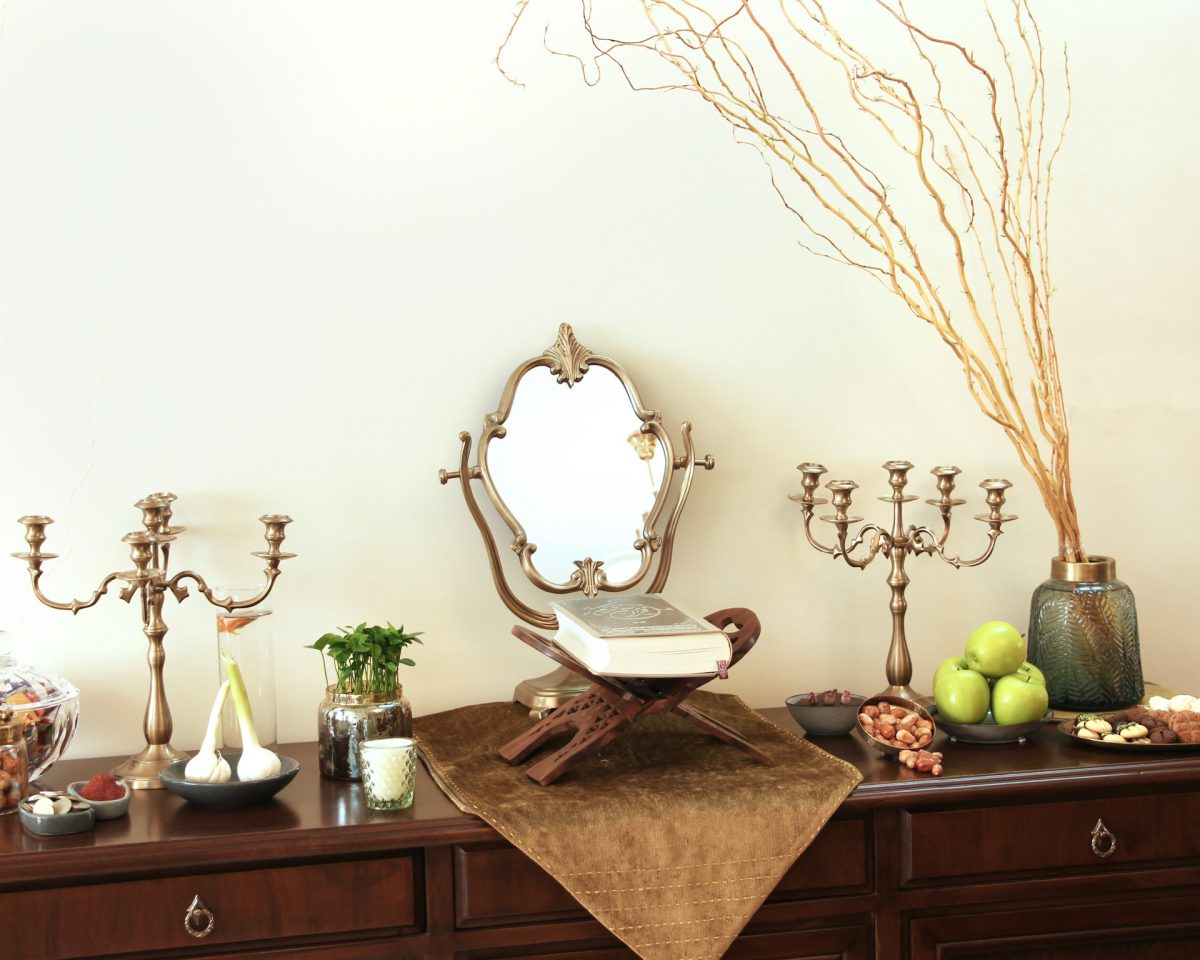Table of Contents
Nowruz the Persian New Year
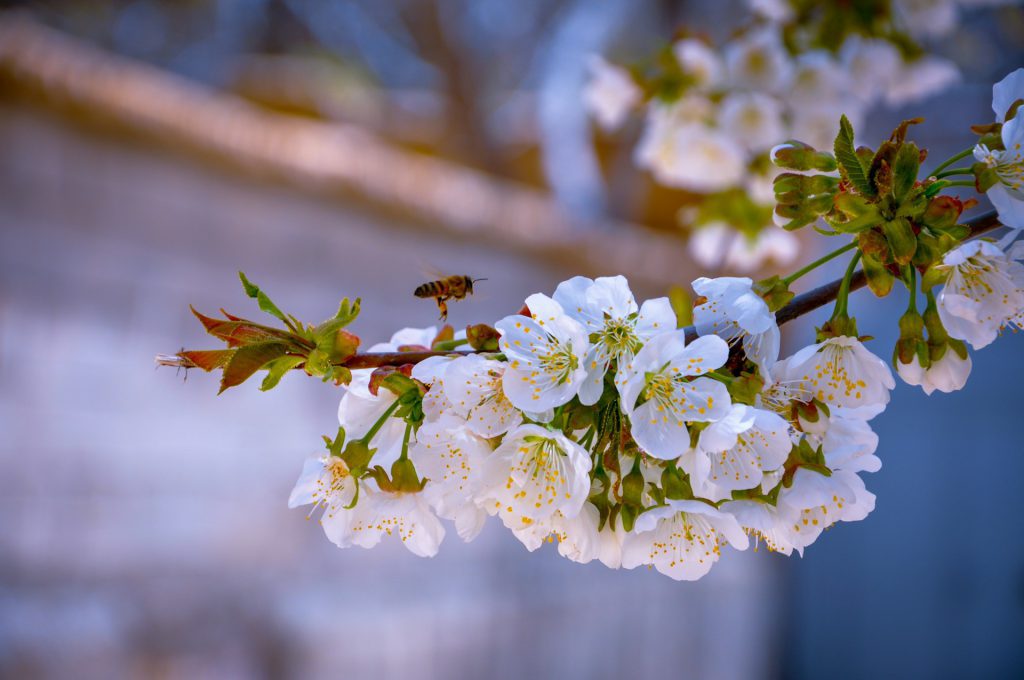
Nowruz, the Iranian New Year, is like a lively springtime party that happens on the first day of Farvardin. It’s not just an Iranian thing—it spreads its joy to countries like Tajikistan, Russia, Turkmenistan, India, Pakistan, Kyrgyzstan, Syria, Iraq, Georgia, Azerbaijan, Albania, China, and Uzbekistan. It’s not your usual holiday; it’s a colorful celebration deeply connected to ancient traditions.
For Iranians, Nowruz is one of the most important festivals in Iran; it’s a time to celebrate nature waking up. When the equinox arrives, it’s like a cosmic high-five between the sun and the Earth, making day and night equal. The new year kicks in on the first day of Farvardin, known as Hormoz or Ormazd day. Iranians see it as a chance for a fresh start, not just for nature but for themselves too. It’s like hitting the reset button, and everyone gets into the spirit by wearing new clothes.
In the calendar we use most of the time (the Gregorian one), Nowruz usually steals the spotlight on March 21 or 20, occasionally giving a surprise encore on March 22. It’s a reminder of the never-ending cycle of life, and Iranians dive into the celebration with enthusiasm. They set up haftsin tables, adding things like Sabzeh, a symbol of growth and renewal. While Iran and Afghanistan officially mark the start of their new year, in Central Asia and the Caucasus, Nowruz is more about welcoming spring without the whole new year fuss.
Nowruz History
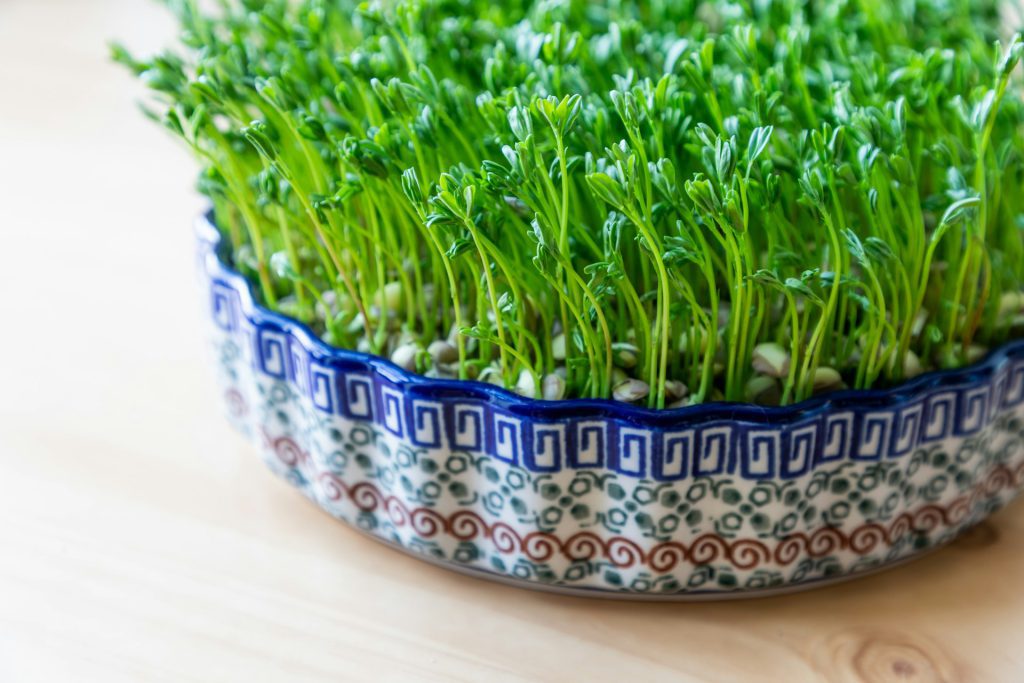
In Ferdowsi‘s poems and Omar Khayyam‘s verses, Nowruz Persian traces its origins way back in Iran’s history—over 3000 years ago, to be precise. This festive tradition is not a recent phenomenon; it has left its mark in the times of Achaemenid, Parthian, Sasanian, and Muslim conquests.
Back then, Iran’s influence stretched far and wide, covering vast lands. Even as these territories evolved separately from Iran over time, this celebration remained a constant. It’s like a resilient spirit that has weathered changes, connecting various communities to a shared heritage, demonstrating the enduring power of happy Nowruz beyond borders.
Nowruz Meaning
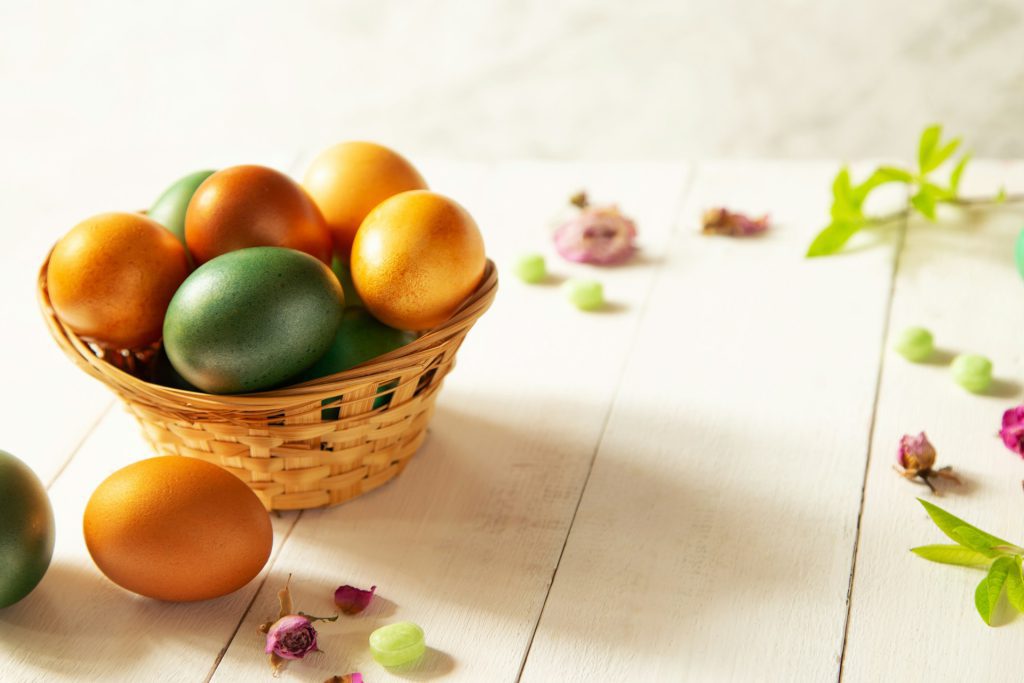
Picture Nowruz as a Persian word masterpiece. It’s like a dance between “now” (new) and “ruz” (day). Blend them, and you get “Nowruz,” a phrase that shouts about new beginnings. In Persian, it’s not just a phrase; it’s like a poetic painting, singing about how every day is a fresh start. “New day” isn’t just a translation; it’s like an open invitation to embrace the idea that Nowruz is all about starting anew, over and over.
Nowruz Traditions
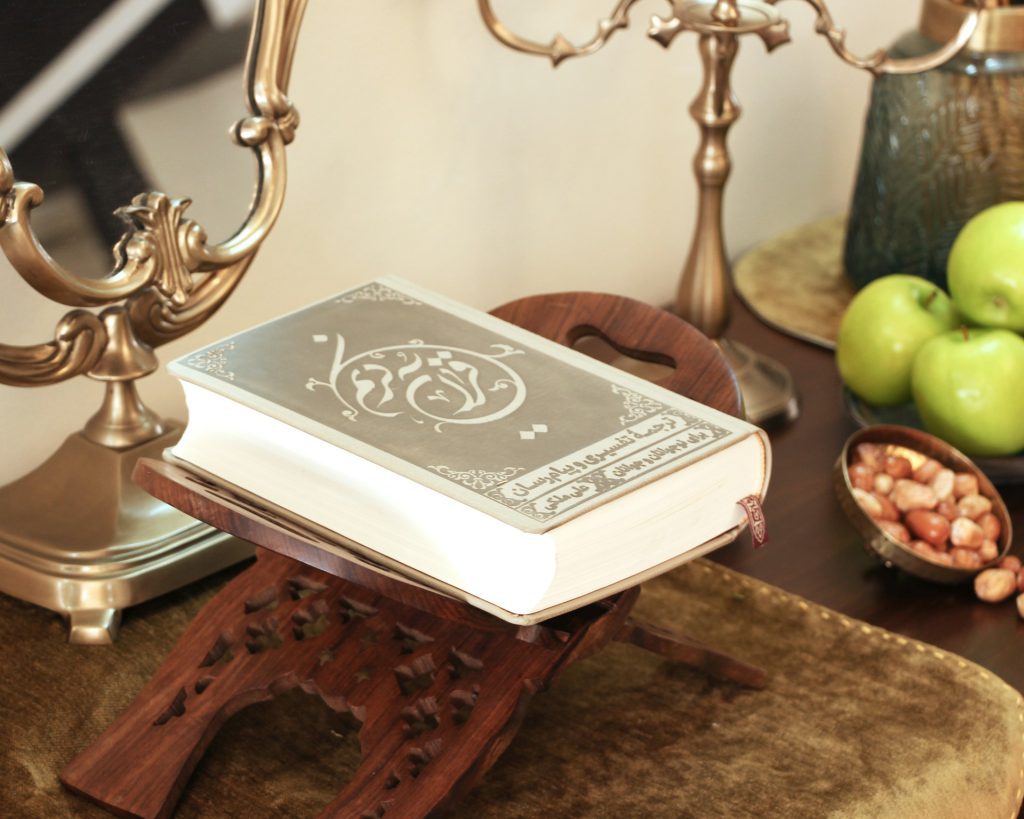
As Iranian New Year Nowruz, is getting closer, families in Iran are getting excited and busy preparing for a big celebration filled with traditions. Before Nowruz, there were two special events: the lively Chahar Shanbeh Soori fire festival and a thorough spring cleaning called Khaneh Takani. These events set the stage for the main part—the Haft Sin table with symbolic items. On this Day, families exchange hugs, kisses, and wishes. Then, on the 13th day, Sizdah Bedar takes everyone outdoors for a special Sabze ritual to make wishes and let go of negativity. Join us as we explore the diverse and joyful preparations in Iran!
Chahar Shanbeh Soori (Fireworks Wednesday)
Chahar Shanbeh Soori, a lively fire festival rooted in Iranian culture for ages, marks the countdown to the New Year with energy and excitement. Believing in the renewing power of fire, folks gather on the last Tuesday of the year to light up seven bonfires in a row. Jumping over the flames, they cheer, “My yellowness of you, your redness of me,” aiming to let go of bad vibes and welcome good health, joy, and happiness. It transforms into a big party with dancing, singing, and sharing meals, creating a feeling of togetherness and anticipation for happy Nowruz just around the corner.
Adding to the joy is “Haji Firouz,” a lively character in bright red clothes with a mysterious blackened face. He plays music, sings, and entertains, like a cheerful messenger from the past when this celebration signaled the upcoming celebration. With the warmth of the fire and Haji Firouz’s beats, Iranians say goodbye to the old year, welcoming the new one with open arms and a spark of tradition.
Khaneh Takani (Spring Cleaning)
Before Nowruz arrives, many Iranian families dive into something called Khaneh Takani—a big spring cleaning that takes about a month for some. It’s not just your regular cleaning routine; it’s like a super-detailed makeover where everything, from rugs to clothes, gets a good wash. During this time, families also spruce up their homes by buying new stuff and fixing anything that needs repair to make sure everything is ready for the upcoming celebrations.
But here’s the fun part—it’s not a one-person job. Once a year, families come together on the night before the New Year to celebrate and give their homes a special refresh. Iranians believe that getting rid of things they don’t need, tossing out the old, and bringing in new stuff will give life a special boost with the New Year. So, as everyone grabs brooms and dusts off shelves, Khaneh Takani turns into a lively family activity, making homes sparkle and shine for the festive days.
Haft Sin
Think of the Haft Sin table like a Persian version of a Christmas tree or Nativity Scene—special items arranged on tables or the floor to welcome the Persian New Year. As the clock ticks towards the new year, families gather around the Haft Sin, a tradition that goes beyond Nowruz for some, lasting up to thirteen days.
Now, let’s talk about the Haft Sin table’s main stars—seven items, each starting with the letter ‘S’ in Persian:
Senjed, the Oleaster, means fertility and emotional strength.
Sib, the Apple, stands for health and beauty, often placed by a caring mom or grandpa.
Sabze, the Nowruz sprout, grown about ten days before the festival with things like wheat or lentils and dressed up with a ribbon, symbolizes fresh starts and new beginnings.
Samanu, a sweet sauce made of wheat, flour, and water, is all about power and goodness, signifying patience, justice, resistance, and strength.
Garlic, or Sir, is like a health superhero, symbolizing cleanliness and good vibes.
Serkeh, Vinegar, reminds us to be okay with life’s ups and downs.
Sumac, a tangy spice, is all about patience and the start of something new.
Besides these Seven S items, the Haft Sin table gets even fancier with other things symbolizing modernity, fertility, abundance, and wealth. Coins for good fortune, water for purity, and various items like mirrors, books, candles, dyed eggs, flowers, sweets, nuts, rosewater, and sometimes even goldfish create a colorful and meaningful display, making this celebration even more special!
The Day of Nowruz
On Nowruz day, families gather at home, sitting around the Nowruz table. Before the New Year officially begins, candles or house lights twinkle to make the place feel warm and cozy.
When the clock hits the New Year, a sweet tradition starts. Family members share hugs, kisses, and Nowruz gifts called Eidi, passing on good vibes and wishes for the year ahead. It’s a lovely way to start things positively.
During Nowruz, Iranians continue celebrating by visiting their relatives. They begin by saying hello to the older family members, showing respect for their wisdom. These visits create a close, happy feeling, bringing the community together.
Eidi and Gifts
Nowruz brings happiness through a nice tradition: swapping gifts. Kids eagerly await getting brand-new money notes, a special way of sharing good wishes. Before the year ends, elders add a touch of respect by putting these money notes on the Quran. Later, these blessed notes become Eidi gifts for the younger ones as the new year starts. And it’s not just about money—some people like giving thoughtful presents to their loved ones. Whether it’s a carefully chosen gift or shiny banknotes, the joy of giving creates a lovely connection between generations during this festive time.
New Outfits
During this celebration, it’s okay to wear brand-new clothes and show them off, adding some extra excitement to the celebrations. Whether you’re hanging out with friends or family, the idea is simple—let everyone see and enjoy your cool new outfits. It’s like a fun way to share the happiness of your latest fashion picks during this special time of the year.
Did va Bazdid (Visiting Each Other)
A long time ago, folks probably knew life would get really busy, making it hard to see the people we care about. That’s why Nowruz comes with this cool tradition called “Did va Bazdid” or visiting each other. It’s a sweet reminder to take a break from our busy lives and meet up at least once a year to celebrate the Nowruz holiday with our loved ones. It’s a simple yet heartfelt way to reconnect, taking a break from our busy days to share happiness with the people who matter.
Sizdah Bedar (Nature Day)
On the 13th day of Nowruz, called Nature Day or Sizdah Bedar, families gather outdoors to enjoy nature, cook lunch, and breathe in fresh air. A special tradition involves the Sabze, the sprout from the Haft Sin table.
Throughout these 13 days, Iranians believe the Sabze absorbs negative energies and diseases. On Sizdah Bedar, it’s time to say goodbye to all that negativity by tossing the Sabze, especially into rivers. Before letting it go, people make wishes and tie knots on the leaves. Unmarried boys and girls often wish for a future spouse in the upcoming year.
The belief is that when these knots are eventually untied, problems find solutions, and dreams have a way of coming true. So, amid the natural beauty, Sizdah Bedar becomes a day of hopeful wishes, laughter, and the simple joy of spending time outdoors with loved ones.
Nowruz Food
In Iran, during Nowruz, people celebrate with lots of yummy food. Different parts of the country have their special dishes. Some famous ones for the first day of the new year include Sabzi Polow, Reshteh Polow, Ash Reshteh, and Baghali Polow. They all have unique flavors. People also make tasty sweets and pastries depending on where they are. Shirini Nokhodchi, Qorabieh, Qaz, and Qottab are some popular sweet treats folks share with guests during this celebration. It’s like a big feast with lots of different and delicious foods!
World Nowruz Day
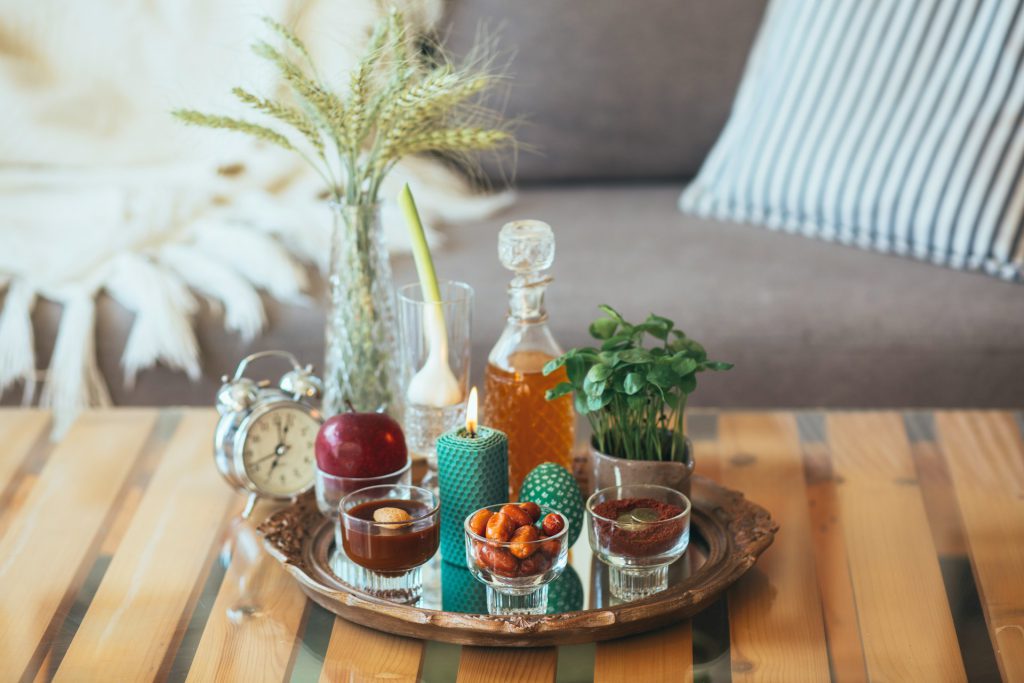
The United Nations General Assembly made Nowruz, which has Iranian roots, an official part of the global calendar. Back on October 29, 2009, the United Nations Educational, Scientific and Cultural Organization (UNESCO) recognized Nowruz as an important intangible World Heritage.
Fast forward to February 23, 2010, and the UN General Assembly gave a thumbs up to marking March 21 as “World Nowruz Day.” In their approval, they described the Persian New Year as an ancient celebration linked to Iran, going back more than 3,000 years. Now, over 300 million people worldwide join in the festivities, turning this celebration into a shared tradition that connects different cultures around the world.
Top Places to Visit in Iran During Nowruz
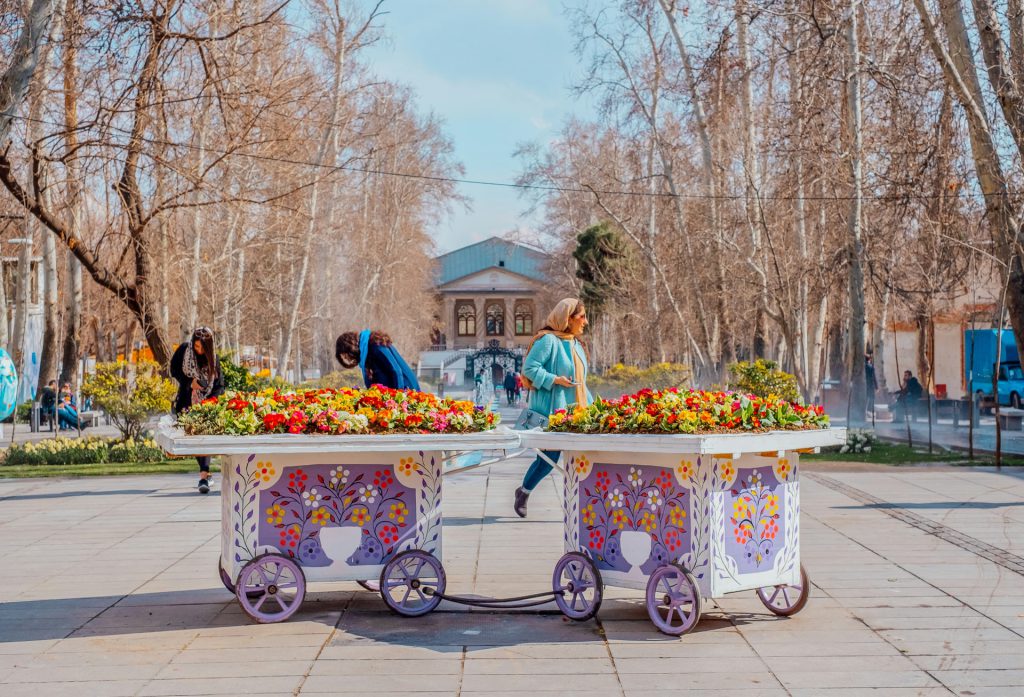
As the Nowruz holiday arrives, Iran becomes a cool place to explore. If you like greenery and rain, head up north. The weather there is mild, making it a perfect time to enjoy the lush landscapes. But if you’re into history, places like Isfahan, Shiraz, and Kashan are where you want to be. They’re like time machines, with old stories told by the stones on the streets. And for those who prefer warmth and the sea, the south of Iran is calling. It’s sunny, and the coastal scenes are like postcards coming to life.
Nowruz holiday isn’t just a trip; it’s a chance to dive into nature, history, and the soothing vibes of the southern beaches.
FAQs about Nowruz
Q1: What is Nowruz?
A1: Nowruz marks the beginning of the Iranian New Year and takes place on the vernal equinox, typically on March 20 or 21.
Q2: Which countries celebrate Nowruz?
A2: The celebration happens in countries with a strong Persian cultural impact, like Afghanistan, Azerbaijan, India, Kyrgyzstan, Kazakhstan, Pakistan, Turkey, Tajikistan, Turkmenistan, and Uzbekistan.
Q3: When is Nowruz 2024?
A3: Nowruz 2024 starts on Monday, March 20, and finishes on Tuesday, March 21. Every year, Nowruz aligns with the first day of spring, also called the “March equinox.”
Q4: Why Nowruz is celebrated?
A4: Spring arrives, and nature comes back to life. Over 300 million people globally see it as a moment for family and friends to gather, think about the past, and hope for a better future. Nowruz is a joyful celebration of humanity’s diverse cultural heritage.
Q5: How long does Nowruz last?
A5: The festivities go on for 13 days, providing a chance to think about the past and make plans for the future.
Q6: How many countries celebrate Nowruz?
A6: The celebration is observed in countries strongly influenced by Persian culture, such as Afghanistan, Azerbaijan, India, Kyrgyzstan, Kazakhstan, Pakistan, Turkey, Tajikistan, Turkmenistan, and Uzbekistan.
Last Words: Experience the Best of Nowruz in Iran with a Customized Tour
Nowruz is like a big, happy party for the Iranian New Year that happens on the first day of Farvardin. It’s not just in Iran—other countries join in, like Tajikistan, Russia, and more. It’s not your usual holiday; it’s a colorful celebration rooted in ancient traditions.
If you’re yearning to immerse yourself in the enchanting festivities of Nowruz, the Persian New Year, there’s no better way to do so than with Customized tours in Iran. Embarking on a journey with To Iran Tour, you’re not just a traveler; you’re an explorer on a quest for an authentic and unforgettable experience. We’re here to turn your travel dreams into reality and help you create lasting memories in the heart of Persian culture.

